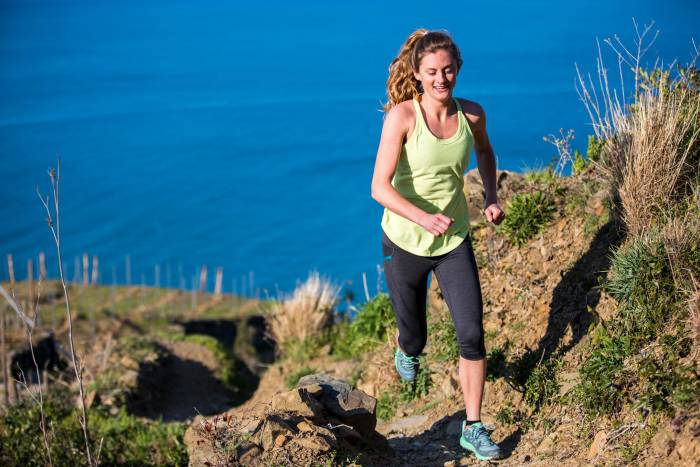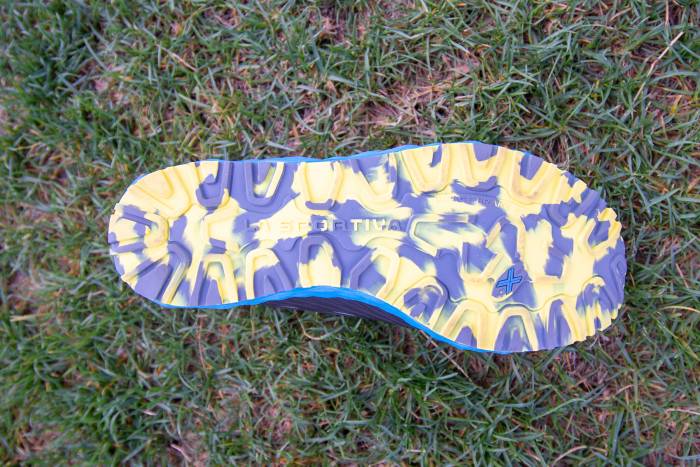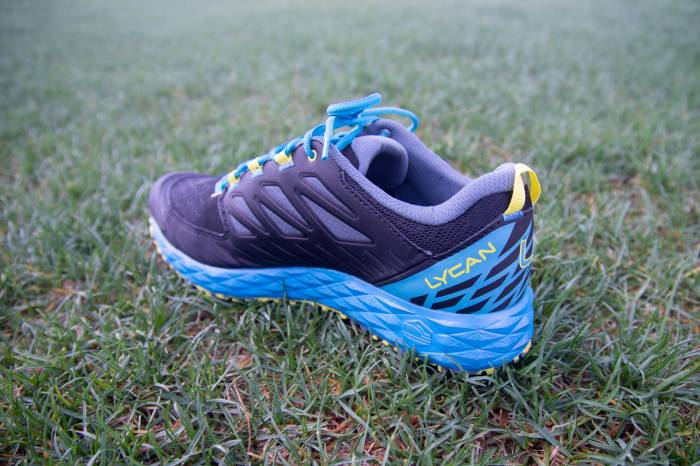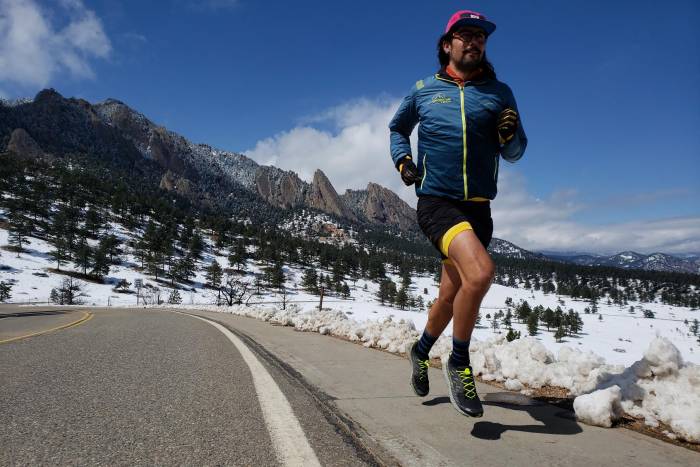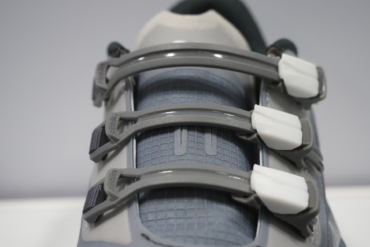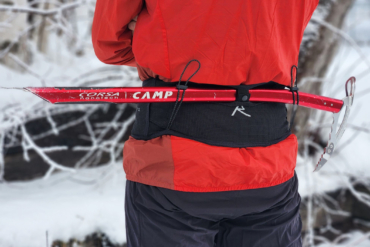From your first training run to standing at the start line of your first ultramarathon, this guide is your first step in a potentially life-changing experience.
Suffering and pain are common speak for ultrarunners. The niche sport can sound intimidating considering the crazy mileage. But with the proper training, footwear, and nutrition, just about anybody can partake in the sport and surprise themselves.
We spoke with La Sportiva athletes Clare Gallagher and Nico Barraza to learn how to transition into longer distances, get into trail running, and, ultimately, run in ultramarathons.
Clare Gallagher burst onto the endurance scene by earning a first-place finish at the 2016 Leadville 100-mile, with the second-fastest time in history. Then in 2017, she won and set the course record on the Courmayeur-Champex-Chamonix 101K in France.
Nico Barraza is no stranger to top finishes in western ultramarathons, having notched first place in a number of 50K and 100K ultras.
Read on to start down the long and humbling road of ultramarathons.
This article is sponsored by La Sportiva and highlights its Lycan trail running shoe. For mid- to long-distance running on trails, the Lycan is a lightweight and ultramarathon-ready shoe.
Are You Sure You Want to Run an Ultra?

Ultramarathons are not for the faint of heart. The races, which range from 50Ks (31.1 miles) to 200-milers and beyond, involve a huge physical and mental commitment – not to mention a lot of time for training.
“If you’re looking to do something really stupid, but soul-searing and life-changing, sign up immediately,” says Clare Gallagher.
But the outcome is an experience you will never forget, and hopefully one full of inner discovery.
“Many find out that they had much more to give than previously thought possible,” remarked Nico Barraza.
Ask yourself, “Is this really something I want to do?”
Running an Ultramarathon: Start Training

Blocking off six months to a year for training should be sufficient for those who already have a baseline of running fitness. Consider allotting more time if you’re a novice runner.
To prevent injury, a solid foundation of endurance athleticism is recommended. Start with very, very mild workouts at slow speeds. That way, you don’t count yourself out of the competition months before race day.
Barraza recommends building up resilience to trail running as a lot of ultramarathons take place on trails – get ready for rocky, rooty terrain.
“Tendons, ligaments, and muscles strengthen from the building of forces over and over again over time,” said Barraza.
Learn To Speed Hike
Most ultrarunners won’t maintain a running stride through an entire ultramarathon. Even elite runners often walk up steep sections of trails. So don’t neglect walking during your training.
Learn to walk sections of trail and hike quickly. Many athletes “power hike” by pressing down on knees with their hands while climbing steep sections of trail. Runners sometimes use trekking poles.
Walking instead of running up sections of challenging trail is an efficient and phenomenal way to conserve energy.
Try power hiking very steep trails, and add a fast walk to your cool-downs during trail running sessions. Most likely, the walk will come into play when you hurt the most, so get good at it.
Get Ultramarathon Gear
Trudging long miles on trail beats up gear like nothing else. You need items that can also hold up to a pounding and are comfortable for six hours to two days of continuous use.

For footwear, Gallagher prefers a road-style shoe that has some protection and traction “to make my feet safe and happy.” She continued, “Over-designed, heavy, hiking-type trail shoes are not my choice.”
Barraza looks for breathable minimalistic shoes that drain water well. He also prefers “a toe box that allows toes to swell, breathe, and splay out.”
For distances up to 50 km, Barraza says the La Sportiva Lycan is a good option. It offers a roomy toe box, is very comfortable, and has a “top-notch” rubber/lug placement.
“If you are looking for a shoe to get you from your doorstep to the trails, up the local hill, and then back for a pint, the Lycan can get you there,” said Barraza.
Similarly, Gallagher also found the Lycan capable on all surfaces, “from pavement to rocky trails to loose dirt and scree.”
Up the Distance
After your foundation is set, it’s time to kick yourself into high gear and spend a lot of time on the trail.
Training plans will fluctuate from person to person. “Many elite runners keep track of vertical gain and time on feet instead of total mileage and pace for a week, unlike road marathoners,” said Barraza.
There’s a myriad of training plans, but most include gradual increases in distance and time of one or two long runs each week in addition to daily shorter runs and speed workouts.
Cross Training
You definitely need to put in time on your feet to be a good runner, but don’t neglect cross training. When running so many miles, cross training helps balance muscle groups and avoid injury.
“I definitely recommend to all my athletes I coach to get on a two- to three-day-a-week strength plan, focusing on the posterior chain,” said Barraza.
Popular cross training for ultrarunners includes weight lifting, cycling, mountain biking, yoga, pilates, swimming, and soccer. Try to activate muscles that are neglected during running and strengthen your core and smaller muscle groups.
Your running and mental health will benefit from the variety.
Dial Your Nutrition
Nutrition is one of the most important aspects of a successful ultra. During big miles, you must eat. “You have to learn to eat and hydrate properly. Your glutes and quads have to be strong enough to withstand gnarly beatings. You need to be more resilient,” said Gallagher.
The only way to know what will react well to your stomach is to test it – before race day.
Your nutrition needs will be unique. You need to fuel up and maintain a healthy diet to withstand putting in 50- to 80-mile weeks.
Most runners choose a mix of salty and sweet foods for ultras. Popular foods include miso soup or broth, SHOT Blocs and other chews, gels, gummy bears, candy bars, potato chips, and PB&J sandwiches.
And don’t forget hydration: Water and electrolyte drinks should flow during your entire run.
Barraza claims nutrition is “everything” – and very personal.
“Experimenting and mimicking race conditions while fueling like race day helps people train their stomach and digestive system.”
With the proper food and gear, all that’s left is to run, run, run. According to Barraza, training is “preparing your body to endure and continue forward progress when things start to hurt.”
Race Day: Time to Perform
Race day, the moment runners look forward to, is an exciting mixture of fitness, nerves, and the unknown. There will be jubilation, exhaustion, and maybe tears.
Both ultrarunners we interviewed had advice for us. Gallagher said she wished she had known before her first ultra to “be ready to be surrounded by a bunch of dudes.”
And Barraza endorsed not overcomplicating things: “At the end of the day, it’s just running. Smile. It’s a privilege to be able to run and be with people you care about.”

